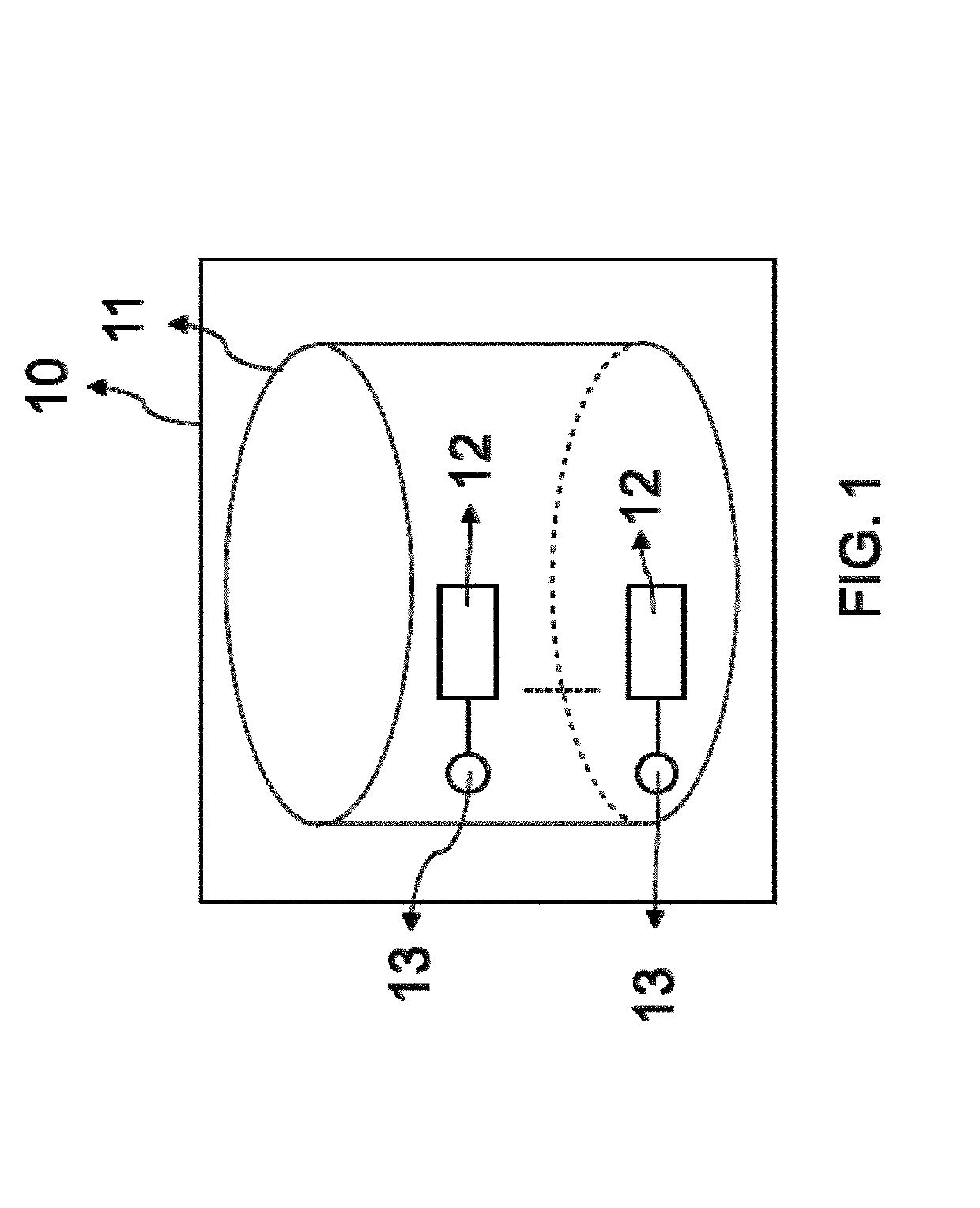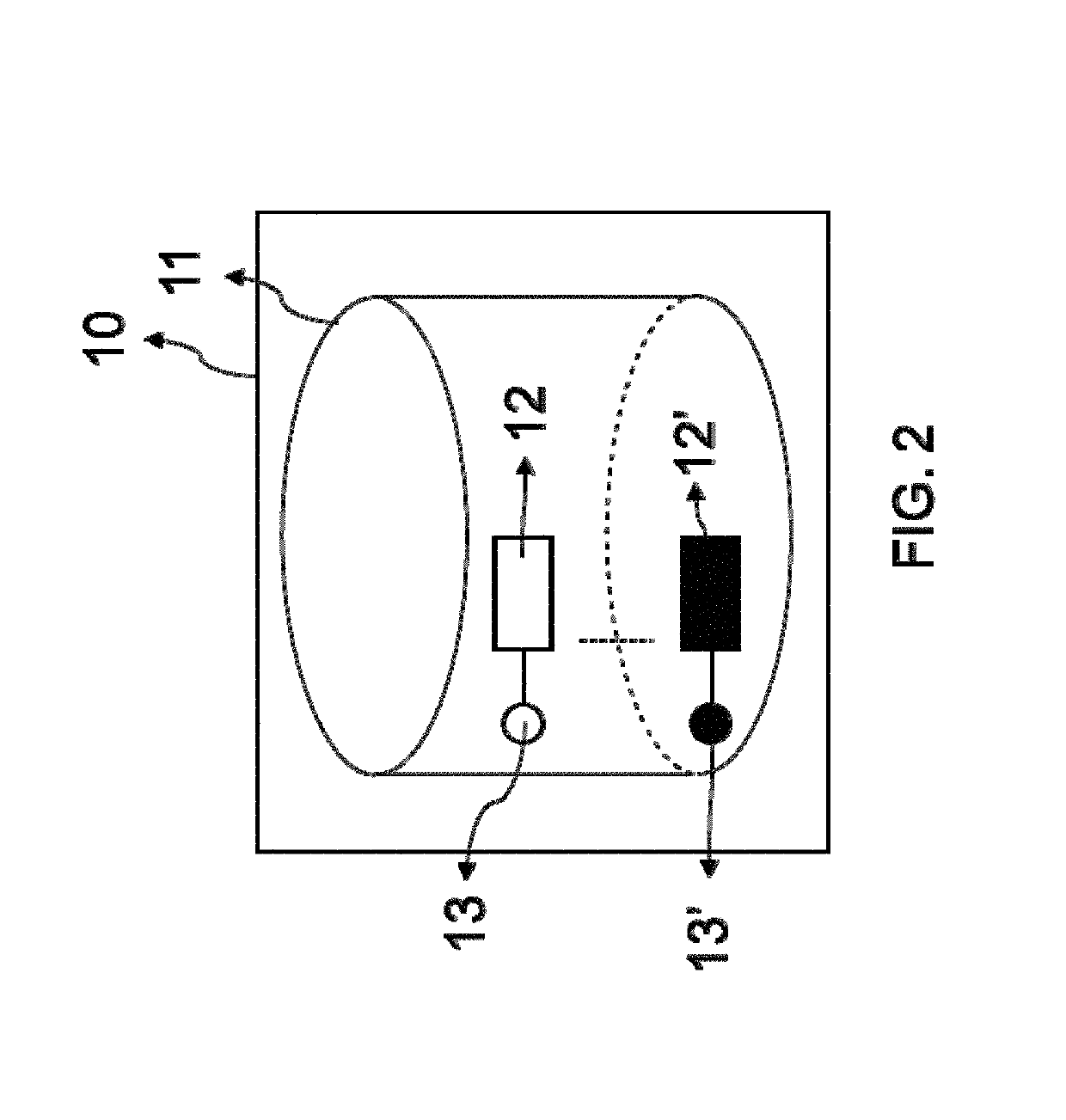Superparamagnetic particle imaging and its applications in quantitative multiplex stationary phase diagnostic assays
a technology of superparamagnetic particles and diagnostic assays, applied in the field of biosensing technology, can solve the problems of large increase in the loss component of complex magnetic susceptibility, limited application of methods, and non-linearity of gmr sensors, and achieve the effect of enhancing the reaction
- Summary
- Abstract
- Description
- Claims
- Application Information
AI Technical Summary
Benefits of technology
Problems solved by technology
Method used
Image
Examples
example 1
onse of Rabbit IgG Conjugated SPNP on the HY-POC Chip of the Present Invention
Materials:
[0188]In this example, materials used include Rabbit IgG 150K (Arista Bio, AGRIG-0100, lot 091325551, 2.88 mg / ml); Goat Anti-Rabbit IgG (H&L) Antibody, Purified (BioSpacific: G-301-C-ABS, lot WEB08, 6.39 mg / ml); Magnetic beads (MicroMod, 09-02-132, 130 nm, 10 mg / ml); Silica beads (CORPUSCULAR C—SiO-10COOH, 10 micron sphere, 10 mg / ml); Nitrocellulose membrane (Millipore HF180UBXSS, lot R6EA62198C); N-Hydroxysulfosuccinimide sodium salt (Sulfo-NHS) (Combi-Blocks Cat: OR-6941; Cas. #106627-54-7); 1-(3-Dimethylaminopropyl)-3-ethylcarbodiimide hydrochloride (EDC) (AK Scientific Cat#965299); bovine serum albumin (BSA); Tween-20; Coupling Buffer: 10 mM PBS pH 7.4; Storage Buffer (10 mM PBS, 0.6 mg / ml BSA, 0.05% NaN3); Sample running buffer (10 mM PBS, 1 mg / ml BSA, 0.1% tween-20).
Methodology:
[0189]1. Preparation of magnetic beads labeled Rabbit IgG (R-IgG-SPNP): 0.1 ml 10 mg / ml 130 nm magnetic beads are ...
PUM
 Login to View More
Login to View More Abstract
Description
Claims
Application Information
 Login to View More
Login to View More - R&D
- Intellectual Property
- Life Sciences
- Materials
- Tech Scout
- Unparalleled Data Quality
- Higher Quality Content
- 60% Fewer Hallucinations
Browse by: Latest US Patents, China's latest patents, Technical Efficacy Thesaurus, Application Domain, Technology Topic, Popular Technical Reports.
© 2025 PatSnap. All rights reserved.Legal|Privacy policy|Modern Slavery Act Transparency Statement|Sitemap|About US| Contact US: help@patsnap.com



